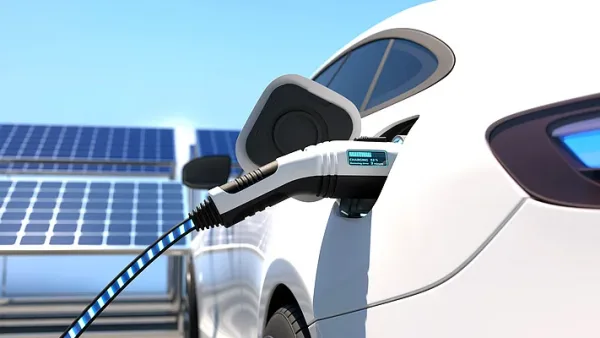
‘Saving for a rainy day’ was quoted by Nicholas Breton in his work in 1582 “Wise men say keep somewhat till a rainy day,” which carries the meaning of putting something aside for a time of need or an emergency—thus implying that saving is an essential element in life. This may also explain why I, as a youngster, was always told to spend no more than what I had.
However, as I grew older, I realised that the concept that had been implanted in me could hardly exist in the world of a grown up. In reality, it is relatively common to spend more than we earn.
Many financial facilities, ranging from short-term personal loans to longer-term mortgages or business loans, are made available to individuals who are eligible to take them.
According to a Bank Negara Malaysia report, Malaysia’s household debt reached US$301.90 billion in December 2019, which was approximately 82.7% of the country’s total Gross Domestic Product (GDP), which was approximately US$365.30 billion. Residential properties constituted the most significant portion of total household debt, accounting for US$679 billion.
The remainder of the household debt comprised the purchase of motor vehicles, personal finance, credit cards, non-residential properties and securities purchases.
Evidently, high household debt is not only the “property” of emerging countries. It is also an issue for policymakers of high-income countries.
As reported by the OECD, in 2019, the level of household debt in the United Kingdom was 84.5% of the total Gross Domestic Product (GDP) and approximately 77.24% of the United States’ GDP.
While deficits in household and individual budgets are quite risky and should be discouraged, budget deficits at the country level are common among policymakers.
Fundamental Keynesian analysis suggests that a rise in the budget deficit during an economic downturn could stimulate spending and promote higher growth, limiting a rise in unemployment.
Thus, government borrowing is an excellent way to kickstart an economy. The theory also argues that deficit spending promotes economic growth, which could lead to higher tax revenues, and that the deficit will fall over time.
In August 2020, Bank Negara Malaysia (BNM) revised the official GDP growth forecast for 2020 to between -3.5% and -5.5%. This might be further revised with the recent placement of Conditional Movement Control Orders (CMCO), related to the COVID-19 pandemic, lasting up to 14 days in some areas, such as Sabah, Kuala Lumpur, Selangor, Putrajaya and Labuan.
Hence, Malaysia’s budget for 2021 will likely be constructed based on a fiscal deficit which focuses on stimulating the economy.
However, with Malaysia’s Government debt accounting for 59% of the country’s Nominal GDP in June 2020, compared with a ratio of 54.3% in the previous quarter, the question is, how can we make it work?
While a fiscal deficit promotes economic growth, a prolonged contractionary fiscal policy may lead to over-indebtedness. Malaysia has been implementing fiscal deficits for years. It was at -2.41% in 2017, -3.31% in 2018 and -3.18% in 2019.
The coronavirus outbreak in early 2020 abruptly ended Malaysia’s positive economic growth and has reduced the nation’s tax revenues. Malaysia’s tax revenue was reported at approximately RM25 billion in June 2020, a decrease from the previous figure of RM38.12 billion for March 2020.
As a result, policymakers should consider some alternative measures to finance the planned spending should the fiscal deficit policy fail to promote economic growth, to the detriment of tax revenue.
As an increase in tax rates will further burden the already depressed economy, policymakers could look into ways to generate income by collecting indirect taxation and non-tax revenue (the recurring income earned by the government from sources other than taxes).
The recent proposal of a service charge of 0.02% for online purchases, including those on e-commerce platforms, such as Shopee and Lazada, which was not received well by the public, is one example of possible non-tax revenue.
Other sources of non-tax revenue include licenses, permits, fees, sales of goods and services from government assets, dividends distributed by government-owned corporations, fees charged against the provision of public health services, road and bridge tolls and income from the rental of government land and buildings.
Perhaps it is not too late for Malaysia to adopt some of the ideas proposed by Christine Lagarde, the previous Managing Director of the IMF, such as tax policy reform and upgrading peoples’ skills and technical resources to improve tax compliance and enhance services to taxpayers.
Although it is claimed that the implementation of the Goods and Services Tax (GST) was one core factor that caused Barisan Nasional to lose the general election in 2018, its positive impact on Malaysia’s government revenues is indisputable.
The government collected RM44 billion from the GST in 2017 which was approximately RM27 billion higher than previous Sales and Service (SST) collected in 2014.
Therefore, should the nation’s policymakers explore the possibility of introducing a better-implemented GST system?
While there are concerns that GST/VAT may lead to inflation, thus burdening consumers, a better-implemented GST system may overcome this issue.
For instance, a Value Added Tax (VAT) was introduced in the United Arab Emirates (UAE) from 1 January 2018. The UAE’s annual consumer price inflation rate jumped to 4.8% in January, its highest level since 2015, but it dropped back to 3.4% in March of that same year because prices had dropped in areas of goods and services that were exempted from the VAT.
This suggested that the impact of VAT on inflation would be small and short-lived.
Hence, if Malaysia were to reintroduce the GST, policymakers should first consider the following; firstly, cap the rate of the GST at a lower percentage than was previously set (6%).
Secondly, carefully and thoughtfully develop a list of necessities, in terms of goods and services that should be exempted from GST, to not unduly burden low-income groups (targeted GST).
Thirdly, enforcement should be firmly but fairly tightened up to avoid profiteering and tax avoidance.
(Goh Lim Thye is Senior Lecturer, Department of Economics and Applied Statistics, Universiti Malaya.)
ADVERTISEMENT
ADVERTISEMENT







































